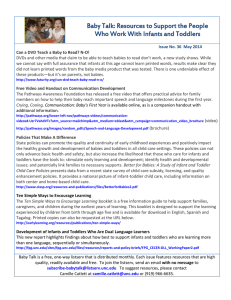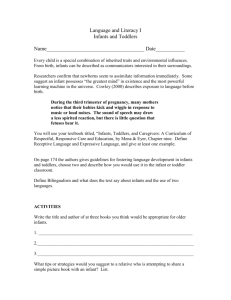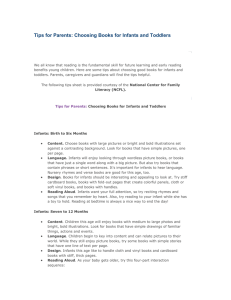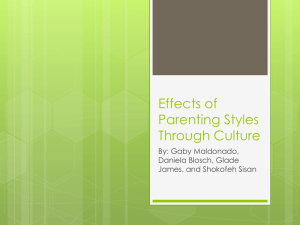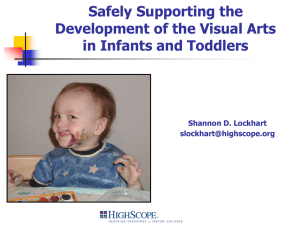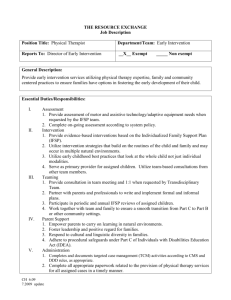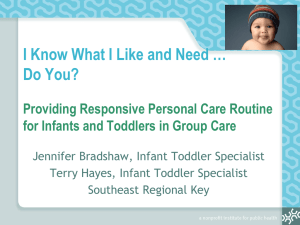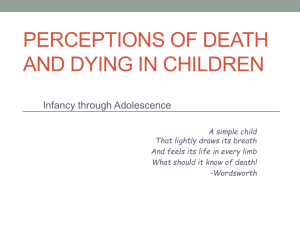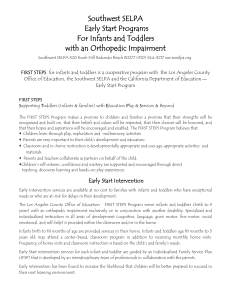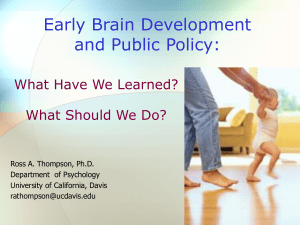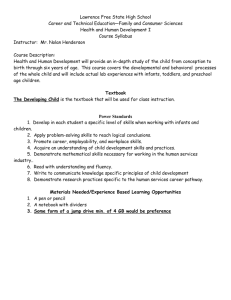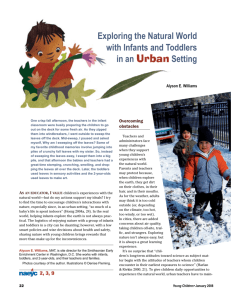January 2016 Baby Talk - FPG Child Development Institute
advertisement
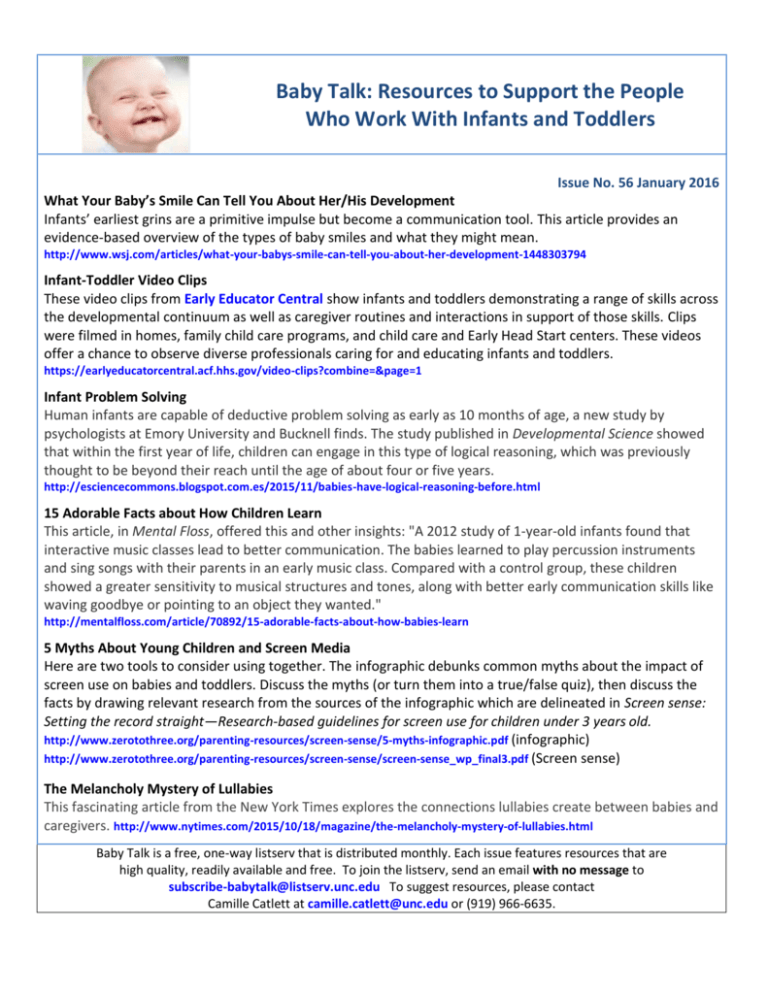
Baby Talk: Resources to Support the People Who Work With Infants and Toddlers Issue No. 56 January 2016 What Your Baby’s Smile Can Tell You About Her/His Development Infants’ earliest grins are a primitive impulse but become a communication tool. This article provides an evidence-based overview of the types of baby smiles and what they might mean. http://www.wsj.com/articles/what-your-babys-smile-can-tell-you-about-her-development-1448303794 Infant-Toddler Video Clips These video clips from Early Educator Central show infants and toddlers demonstrating a range of skills across the developmental continuum as well as caregiver routines and interactions in support of those skills. Clips were filmed in homes, family child care programs, and child care and Early Head Start centers. These videos offer a chance to observe diverse professionals caring for and educating infants and toddlers. https://earlyeducatorcentral.acf.hhs.gov/video-clips?combine=&page=1 Infant Problem Solving Human infants are capable of deductive problem solving as early as 10 months of age, a new study by psychologists at Emory University and Bucknell finds. The study published in Developmental Science showed that within the first year of life, children can engage in this type of logical reasoning, which was previously thought to be beyond their reach until the age of about four or five years. http://esciencecommons.blogspot.com.es/2015/11/babies-have-logical-reasoning-before.html 15 Adorable Facts about How Children Learn This article, in Mental Floss, offered this and other insights: "A 2012 study of 1-year-old infants found that interactive music classes lead to better communication. The babies learned to play percussion instruments and sing songs with their parents in an early music class. Compared with a control group, these children showed a greater sensitivity to musical structures and tones, along with better early communication skills like waving goodbye or pointing to an object they wanted." http://mentalfloss.com/article/70892/15-adorable-facts-about-how-babies-learn 5 Myths About Young Children and Screen Media Here are two tools to consider using together. The infographic debunks common myths about the impact of screen use on babies and toddlers. Discuss the myths (or turn them into a true/false quiz), then discuss the facts by drawing relevant research from the sources of the infographic which are delineated in Screen sense: Setting the record straight—Research-based guidelines for screen use for children under 3 years old. http://www.zerotothree.org/parenting-resources/screen-sense/5-myths-infographic.pdf (infographic) http://www.zerotothree.org/parenting-resources/screen-sense/screen-sense_wp_final3.pdf (Screen sense) The Melancholy Mystery of Lullabies This fascinating article from the New York Times explores the connections lullabies create between babies and caregivers. http://www.nytimes.com/2015/10/18/magazine/the-melancholy-mystery-of-lullabies.html Baby Talk is a free, one-way listserv that is distributed monthly. Each issue features resources that are high quality, readily available and free. To join the listserv, send an email with no message to subscribe-babytalk@listserv.unc.edu To suggest resources, please contact Camille Catlett at camille.catlett@unc.edu or (919) 966-6635.
